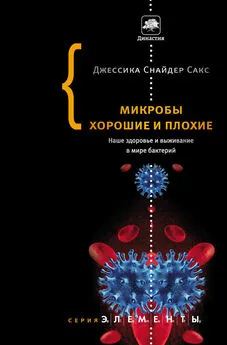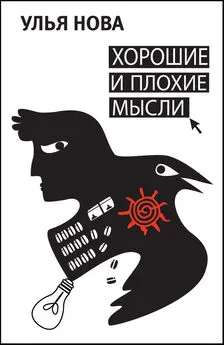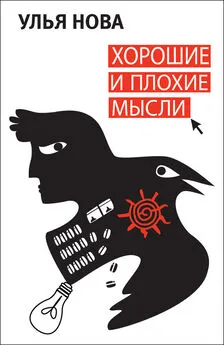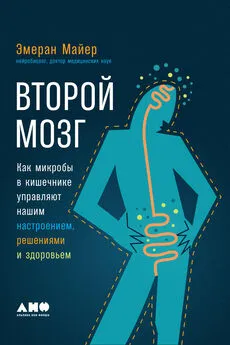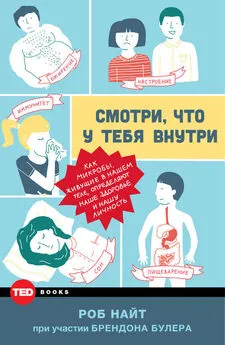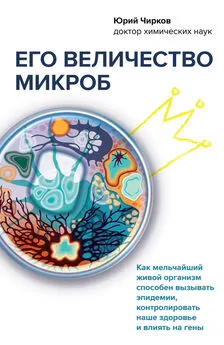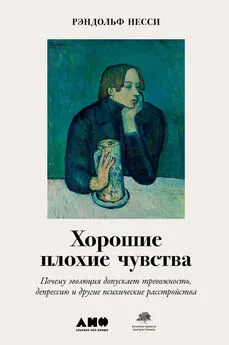Джессика Сакс - Микробы хорошие и плохие. Наше здоровье и выживание в мире бактерий
- Название:Микробы хорошие и плохие. Наше здоровье и выживание в мире бактерий
- Автор:
- Жанр:
- Издательство:Corpus
- Год:2015
- Город:Москва
- ISBN:978-5-17-093708-0
- Рейтинг:
- Избранное:Добавить в избранное
-
Отзывы:
-
Ваша оценка:
Джессика Сакс - Микробы хорошие и плохие. Наше здоровье и выживание в мире бактерий краткое содержание
Рассказывая о том, что в нашей войне с микробами пошло совсем не так, как надо, Джессика Снайдер Сакс раскрывает перед читателями складывающиеся сегодня представления о симбиотических отношениях человеческого организма и населяющих его микробов, число которых, кстати, превосходит число наших собственных клеток в девять раз! Кроме того, автор этой книги подает нам надежду на то, что в будущем люди научатся создавать и использовать антибиотики более благоразумно, и даже на то, что когда-нибудь мы сможем заменить противо-бактериальные и дезинфицирующие средства бактериальными, каждое из которых будет специально разработано так, чтобы обеспечивать наилучшую заботу о нашем здоровье.
Микробы хорошие и плохие. Наше здоровье и выживание в мире бактерий - читать онлайн бесплатно полную версию (весь текст целиком)
Интервал:
Закладка:
58 H enri Braat et al., “A Phase I Trial with Transgenic Bacteria Expressing Interleukin-10 in Crohn’s Disease”, Clinical Gastroenterology and Hepatology 4 (2006), 754–759.
59 Janice Liu et al., “Activity of HIV Entry and Fusion Inhibitors Expressed by the Human Vaginal Colonizing Probiotic Lactobacillus reuteri PC-14”, Cellular Microbiology 9 (2007’), 120–130.
60 Интервью, взятые автором у Питера Ли (Peter Lee), и переписка по электронной почте с января 2005 г. по декабрь 2006 г.
61 N. Sewankambo et al., “HIV-1 Infection Associated with Abnormal Vaginal Flora Morphology and Bacterial Vaginosis”, Lancet 350 (1997), 546–550; H. L. Martin et al., “Vaginal Lactobacilli, Microbial Flora, and the Risk of Human Immunodeficiency Virus Type 1 and Sexually Transmitted Disease Acquisition”, Journal of Infectious Diseases 180 (1999), 1863–1868.
62 Theresa L.-Y. Chang, “Inhibition of HIV Infectivity by a Natural Human Isolate of Lactobacillus jensenii Engineered to Express Functional Two-Domain CD4”, Proceedings of the National Academy of Sciences 100 (2003), 11672-11677.
63 M. K. Boyd et al., “Discovery of Cyanovirin-N, a Novel Human Immunodeficiency Virus-Inactivating Protein That Binds Viral Surface Envelop Glycoprotein ghl20: Potential Applications to Microbicide Development”, Antimicrobial Agents and Chemotherapy 41 (1997), 1521–1530; C. C. P. Tsai et al., “Cyanovirin-N Inhibits AIDS Virus Infections in Vaginal Transmission Models”, AIDS Research and Human Retroviruses 20 (2004), 11–18.
64 Xiaowen Liu et al., “Engineered Vaginal Lactobacillus Strain for Mucosal Delivery of the Human Immunodeficiency Virus Inhibitor Cyanovirin-N”, Antimicrobial Agents and Chemotherapy 50 (2006), 3250–3259.
65 D. Medaglini et al., “Mucosal and Systemic Immune Responses to a Recombinant Protein Expressed on the Surface of the Oral Commensal Bacterium Streptococcus gordonii After Oral Colonization”, Proceedings of the National Academy of Sciences 92 (1995), 6868–6872.
66 Ashu Sharma et al., “Oral Immunization with Recombinant Streptococcus gordonii Expressing Porphyromonas gingivalis FimA Domains”, Infection and Immunity 69 (2001), 2928–2934.
67 Corinne Grangette et al., “Protection Against Tetanus Toxin After Intragastric Administration of Two Recombinant Lactic Acid Bacteria: Impact of Strain Viability7 and In Vitro Persistence”, Vaccine 20 (2002), 3304–3309; B. Corthesy et al., “Oral Immunization of Mice with Lactic Acid Bacteria Producing Helicobacter pylori Urease B Subunit Partially Protects Against Challenge with Helicobacter felis”, Journal of Infectious Diseases 192 (2005), 1441–1449.
68 L. Scheppler et al., “Intranasal Immunisation Using Recombinant Lactobacill johnsonii as a New Strategy to Prevent Allergic Disease”, Vaccine 9 (2005), 1126–1134.
69 Scheppler et al., “Intranasal Immunisation Using Recombinant Lactobacillus johnsonii ”; B. Stadler et al., “Lactic Acid Bacteria as Agents for Preventing Allergy”, заявка на патент США № 200402655290.
70 Eva Medina, Carlos Alberto Guzman, “Use of Live Bacterial Vaccine Vectors for Antigen Delivery: Potential and Limitations”, Vaccine 19 (2001), 1573–1580.
71 Переписка Джо Камминса (Joe Cummins) с автором по электронной почте в ноябре 2006 г.
72 Ronald Jackson et al., “Expression of Mouse Interleukin-4 by Recombinant Ectromelia Virus Suppresses Cytolytic Lymphocyte Responses and Overcomes Genetic Resistance in Mousepox”, Journal of Virology 75 (2001), 1205–1210; Rachel Nowak, “Disaster in the Making”, New Scientist, January 3, 2001, 4–5.
73 NADA 141–101 PREEMPT™ – original approval (одобрение средства “Preempt” Управлением пищевых продуктов и медикаментов и краткое описание методов использования и действия этого средства), см. www.fda.gov/AnimalVeterinary / Products /Approved AnimalDrugProducts / FOIADrugSummaries / ucm117130.htm.
74 J. Raloff, “Spray Guards Chicks from Infections”, Science News, March 28 1998, 196.
75 Интервью, взятые автором у Тодда Кэллауэя (Todd Callaway) в сентябре – декабре 2006 г.
76 Kenneth Genovese et al., “Protection of Suckling Neonatal Pigs Against Infection with an Enterotoxigenic Escherichia coli Expressing 987P Fimbriae by the Administration of a Bacterial Competitive Exclusion Culture”, Microbial Ecology in Health and Disease 13 (2001), 223–228; Roger Harvey et al., “Use of Competitive Exclusion to Control Enterotoxigenic Strains of Escherichia coli Weaned Pigs”, Journal of Animal Science 83 (2005), E44 – E47.
77 R. E. Holland, “Infectious Causes of Diarrhea in Young Farm Animals”, Clinical Microbiology Reviews 3 (1990), 345–375; S. Tzipori, “The Relative Importance of Enteric Pathogens Affecting Neonates of Domestic Animals”, Advances in Veterinary Science and Comparative Medicine 29 (1985), 103–206.
78 И нтервью, взятое автором у Фрэнсиса Форста (Francis Forst) 28 ноября 2006 г.
79 Интервью, взятые автором у Дэвида Талера, и переписка по электронной почте с декабря 2004 г. по декабрь 2006 г., а также неопубликованная рукопись: David Thaler, “The Microbial Neolithic Revolution”.
80 David Thaler, “The Evolution of Genetic Intelligence”, Science 264 (1994), 224–225; David Thaler, “Hereditary Stability and Variation in Evolution and Development”, Evolution and Development 1 (1999), 113–122.
1 Эпиграф: Lewis Thomas, Lives of a Cell: Notes of a Biology Watcher (New York: Penguin, 1978), 78.
2 Интервью, взятые автором у Кевина Трейси в ноябре 2006 г. Подробнее узнать об истории Дженис и о новаторских исследованиях природы септического шока и тяжелого сепсиса, которыми занимался Трейси, можно в его глубоко информативной книге воспоминаний, прочитать которую я всячески рекомендую: Kevin Tracey, Fatal Sequence: The Killer Within (Washington, D. C.: Dana Press, 2005).
3 Derek Angus et al., “Epidemiology of Severe Sepsis in the United States: Analysis of Incidence, Outcome, and Associated Costs of Care”, Critical Care Medicine 29 (2001), 1303–1310.
4 Brian Beutler et al., “Passive Immunization Against Cachectin/ Tumor Necrosis Factor Protects Mice from Lethal Effect of Endotoxin”, Science 229 (1985), 869–871.
5 Kevin Tracey et al., “Shock and Tissue Injury Induced by Recombinant Human Cachectin”, Science 234 (1986), 470–474.
6 Kevin Tracey et al., “Anti-cachectin/TNF Monoclonal Antibodies Prevent Septic Shock During Lethal Bacteremia”, Nature 330 (1987), 662–464.
7 Huan Wang et al., “HMG-1 as a Late Mediator of Endotoxin Lethality in Mice”, Science 285 (1999), 248–251; Huan Yang et al., “Reversing Established Sepsis with Antagonists of Endogenous High-Mobility Group Box 1”, Proceedings of the National Academy of Sciences 101 (2004), 296–301.
8 L. V. Borovikova et al., “Vagus Nerve Stimulation Attenuates the Systemic Inflammatory Response to Endotoxin”, Nature 405 (2000), 458–462.
9 Hong Wang et al., “Nicotinic Acetylcholine Receptor alpha/ Subunit Is an Essen tial Regulator of Inflammation”, Nature 421 (2003), 384388; Kevin Tracey, “The Inflammatory Reflex”, Nature 420 (2002), 853–859.
10 Thomas Bernik et al., “Pharmacological Stimulation of the Cholinergic Anti inflammatory Pathway”, Journal of Experimental Medicine 195 (2002), 781–788; H. Wang et al., “Cholinergic Agonists Inhibit HMGB1 Release and Improve Survival in Experimental Sepsis”, Nature Medicine 10 (2004), 1216–1221.
11 Greta Van den Berghe et al., “Intensive Insulin Therapy in Critically Ill Patients”, New England Journal of Medicine 345 (2001), 1359–1367.
12 Greg Martin et al., “The Epidemiology of Sepsis in the United States from 1979 Through 2000”, New England Journal of Medicine 348 (2003), 1546–1554.
13 Derek Angus, “Sepsis on the Rise in the United States”, 32nd annual Critical Care Congress, San Antonio, Texas, 2003; Derek Angus et al., “Epidemiology of Severe Sepsis in the United States: Analysis of Incidence, Outcome, and Associated Costs of Care”, Critical Care Medicine 29 (2001), 1303–1310.
14 Garth Ehrlich et al., “Device-Related Infections of Prosthetic Devices in the United States, Table 1 in Engineering Approaches for the Detection and Control of Orthopaedic Biofilm Infections”, Clinical Orthopaedics and Related Research 2005 (437), 59–66. Примечание. В указанной таблице не учтены искусственные хрусталики глаза, которых в США ежегодно имплантируют от одного до двух миллионов, что в 7-10 % случаев приводит к развитию инфекций. Источник: A. Hornblass et al., “Current Techniques of Enucleation: A Survey of 5,439 Intraorbital Implants and a Review of the Literature”, Ophthalmic Plastic and Reconstructive Surgery 11 (1995), 77–86.
15 Garth Ehrlich et al., “Intelligent Implants to Battle Biofilms”, ASM News 70 (2004), 127–133.
16 Joel Epstein et al., “A Survey of Antibiotic Use in Dentistry”, Journal of the American Dental Association 131 (2000), 1600–1609; G. W. Meyer, A. L. Artis, “Antibiotic Prophylaxis for Orthopedic Prostheses and GI Procedures: A Report of a Survey”, American Journal of Gastroenterology 92 (1997), 989–991; P. B. Lockhart et al., “Decision-Making on the Use of Antimicrobial Prophylaxis for Dental Procedures: A Survey of Infectious Disease Consultants and a Review”, Clinical Infectious Diseases 34 (2002), 1621–1626.
17 Lucas Hoffman et al., “Aminoglycoside Antibiotics Induce Bacterial Biofilm Formation”, Nature 436 (2005), 1171–1175.
18 C. von Eiff et al., “Modern Strategies in the Prevention of Implant-Associated Infections”, International Journal of Artificial Organs 28 (2005), 1146–1156.
19 D. Neut et al., “Residual Gentamicin-Release from Antibiotic-Loaded Polymethylmethacrylate Beads After Five Years of Implantation”, Biomaterials 24 (2003), 1829–1831.
20 R. G. Seipelt et al., “The St. Jude ‘Silzone’ Valve: Midterm Results in Treatment of Active Endocarditis”, Annals of Thoracic Surgery 72 (2001), 758–762.
Читать дальшеИнтервал:
Закладка:
